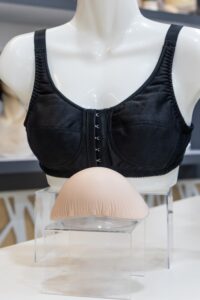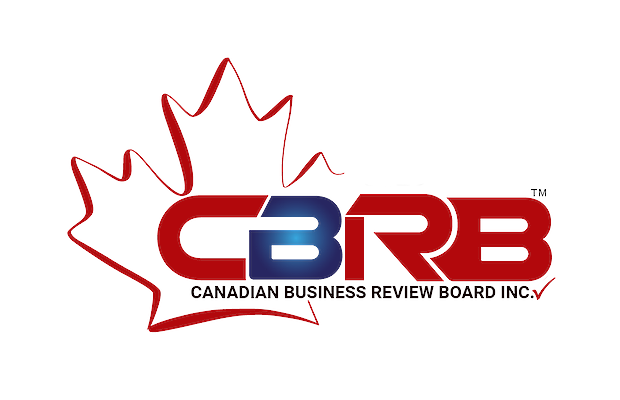Post-Mastectomy Breast Forms, known as breast prostheses or reconstructive breast implants, are medical devices for women who have had mastectomies. These breast forms are silicone and come in different shapes, sizes and densities. This type of device allows a woman to regain the shape and volume of her breasts following surgery.
It is important to note that these forms are not a barrier between the skin and the radiation; they are breast-shaped silicone forms. External beam radiation therapy recreates a breast mound after a mastectomy.
Types of Post-Mastectomy Breast Forms
 There are different types of post-mastectomy breast forms:
There are different types of post-mastectomy breast forms:
Standard of Full Breast Prostheses
These forms are for women who have had a complete or radical mastectomy and are available in right or left positions. In partial mastectomy cases, the standard breast forms are also used. Measuring the torso size is to determine the volume needed to reconstruct an upper or lower breast portion. Some women may also need an additional form to cover the nipple area when undergoing a partial mastectomy due to cancer.
Shell Breast Forms
Shell Post-Mastectomy Breast Forms forms are for women who have had a complete mastectomy, FBA, or partial mastectomy. The shell portion of these breast forms is surgically implanted in the underarm, forming an external contour to the breast. They are also useful as nipple shields for women undergoing radiation treatment for cancer and chemotherapy.
Partial Breast Forms
Partial forms blend with the natural contour of the upper or lower breast, which makes it look like it is a natural part of the body, thus eliminating any distortion. These forms insert in the contralateral breast during a partial mastectomy or in the right or left breast after a total mastectomy.
Custom Made Breast Forms
Custom Made Post-Mastectomy Breast Forms are also referred to as unique or special forms. They are custom-made for individual patients who have had a partial mastectomy or FBA. These breast forms adjust according to the volume of breast tissue that needs to be re-created. This type of post-mastectomy breast form is an excellent alternative for patients who may have had a previous saline implant that failed or did not work.
Silicon Breast Prostheses
These breast forms have full-body silicon and are proven effective for external beam radiation therapy, which requires tissue contact. These forms are also used in mastectomy because they allow women to keep their skin in direct touch with the radiation beam, thus giving higher doses of radiation. You can mold the silicon breast forms at home, and the mold is later brought to a medical supply store for ordering.
Stick-on Breast Forms
Stick-on Post-Mastectomy Breast Forms forms can be worn on the chest wall and have a gel interior covered with an adhesive backing. These stick-on forms do not change the shape of the breast and are used for women who have undergone a partial or radical mastectomy. They have a transparent or opaque skin-colored backing. This type of post-mastectomy breast form is used by women who have had breast cancer treatment.
Soft Breast Forms
These forms are referred to as lite or lightweight structures. They are often used after radiation therapy because they do not contain metal parts and are lighter than the silicon types, making them more comfortable in smaller and larger chest sizes. A soft breast form is a cone-shaped device comprised of sponge material and covered with a skin-like covering. They do not obstruct the radiation beam’s path of penetration and are used to shape the contour of the reconstructed breast mound.
Symmetrical Post-Mastectomy Breast Forms
These breast forms are used because it is more comfortable for a patient to have them on the same side. They are useful before mastectomy, when radiation therapy is required, or after surgery. These types of post-mastectomy breast forms are similar to the breast prostheses surgically implanted following FBA treatment.
Benefits of Post-Mastectomy Breast Prosthesis
- They create an external breast mound in the reconstructed area to prevent unwanted disfigurement.
- Breast forms act as a cushion between the skin and the radiation beam. This allows higher doses of radiation therapy to reach the cancer cells.
- They help support and create better symmetry while recovering from mastectomy surgery.
- They help reduce the feeling of physical imbalance following mastectomy surgery, which helps women feel comfortable with their bodies again during treatment and recovery.
- They are easily removable to assist with patient comfort and recovery.
- Post-mastectomy breast forms are used in conjunction with radiation therapy, cryosurgery, and surgery, which increases the effectiveness of treatment by aiding in the reconstruction of one’s breast mound.
Drawbacks
- Breast forms are not entirely compatible with external beam radiation therapy, which requires tissue contact.
- They are not used as a medical device to treat cancer patients. Rather, as a reconstructive device that gives women the same breast volume they were born with.
- Breast forms have to be replaced periodically because of their plastic nature. This is usually done every three months for women who do not use an adhesive backing.
- Breast forms may cause the skin of the chest to dehydrate and crack. This can be painful and a breeding ground for bacteria. Therefore, it is essential to regularly apply breast form barrier creams between radiation treatments and daily wear to prevent this from happening.
Different Shapes of Post-Mastectomy Breast Forms
The breast forms available on the market today are varied, but they all follow specific basic shapes. You must match each breast form to the patient’s chest size, skin color, and body type for the cosmetic appearance of breast reconstruction surgery to be correct. The most common types of breast forms are:
Cone
It is a prevalent breast form used for cosmetic reconstruction after cancer, surgery, and radiation therapy. The conical shape mimics the natural breast shape and beneficial as an internal or external form by inserting it into the pre-existing breast. If it is to be worn externally, it must be covered with a special adhesive backing that adheres to the body when the medical tape is removed.
Disc
Also known as the half-round, this form has a curved shape and is used mainly for the reconstruction of the face and neck reconstruction. These forms are generally used medically to give the patient a more natural appearance and can be implanted in the breast or back. The disc form is also considered an ideal shape because it allows women to have their skin in direct contact with the radiation beam, providing higher doses of radiation therapy without harming healthy tissue.
Symmetrical
Symmetrical breast forms are used in mastectomy procedures. They allow women to keep their skin in direct contact with the radiation beam, for higher doses of radiation therapy.
Oval
The oval-shaped breast form is similar to the symmetrical shape and provides women with natural-looking breast reconstruction. This type of post-mastectomy breast form is used by women who have had treatment for breast cancer. As a result, it does not require a special adhesive backing.
Teardrop
The teardrop form is the most common type of breast form, reconstructing the contour of a woman’s breast mound. The teardrop shape is very similar to the natural breast shape. This is why it is a widely used post-mastectomy breast form.
Breast forms have changed women’s lives undergoing breast cancer treatments and mastectomies. Women can maintain natural-looking breasts through treatment and recovery, which helps them return to their daily lives faster than they would without such a prosthesis. They are a cost-effective alternative to breast reconstruction surgery and are available for all women regardless of their financial status.
For inquiries, please email our office at [email protected], and we will send a quick reply will be sent about your condition. If you require a personal consultation that requires an appointment, please call the office today at 416-782-5353.


